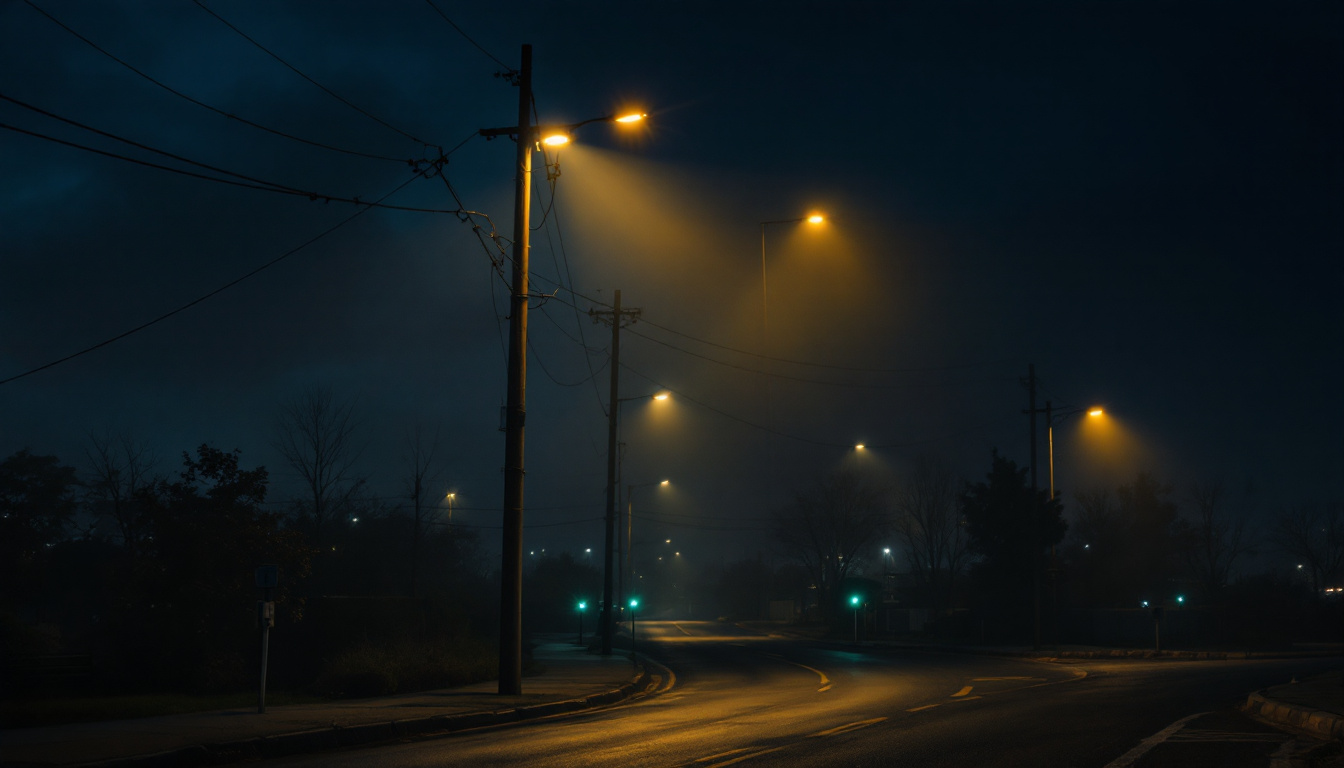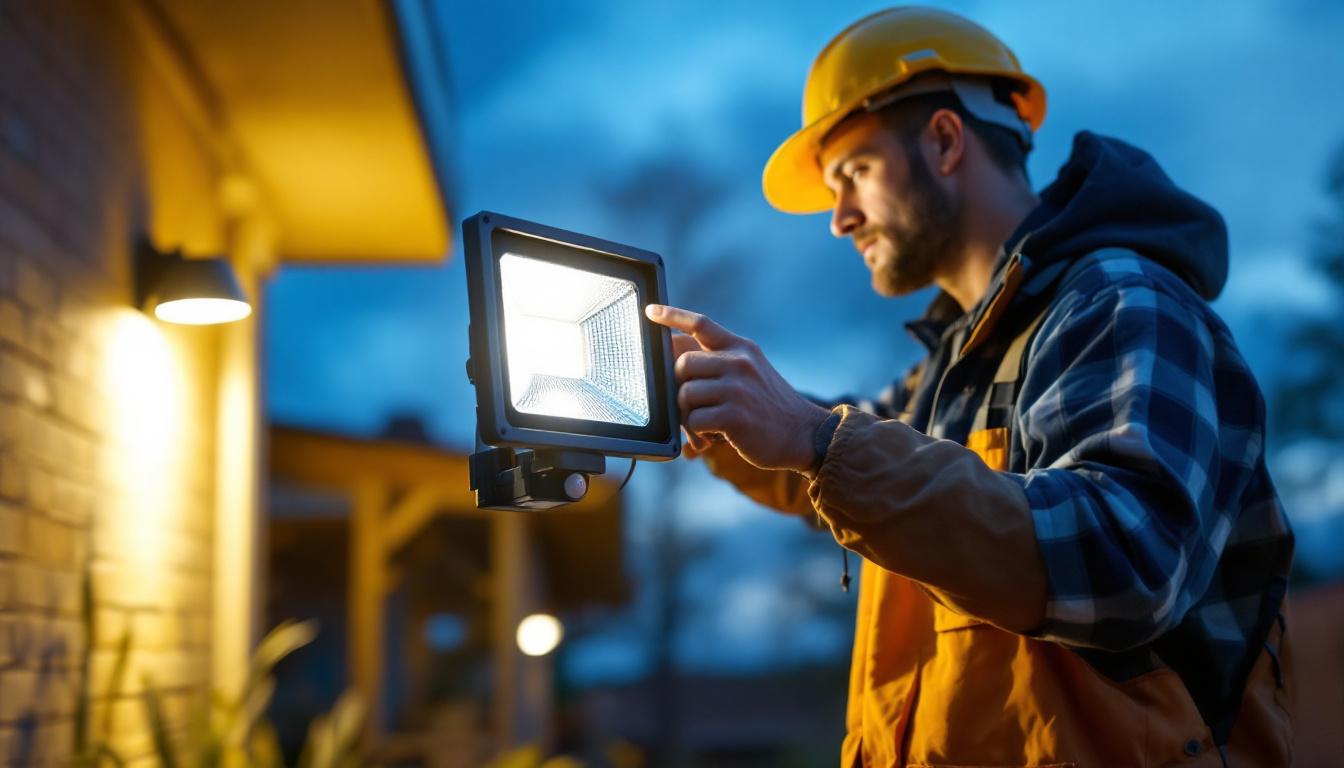
In the world of outdoor lighting, pole parking is an essential aspect that often gets overlooked by lighting contractors. While the focus may typically be on the aesthetics or energy efficiency of the fixtures themselves, the strategic placement and design of pole lighting can significantly impact safety, functionality, and overall satisfaction for clients. This article delves into the various elements that contractors should consider when planning and executing pole parking projects.
Proper pole placement is crucial for achieving optimal lighting in parking areas. It not only enhances visibility but also ensures safety for both pedestrians and vehicles. Many contractors may underestimate the influence of pole positioning on light distribution and overall effectiveness.
Before any installation begins, a thorough assessment of the parking area is necessary. This includes evaluating the layout, existing structures, and potential obstacles that could obstruct light. Factors such as the height of surrounding buildings, trees, and even the angle of the sun can affect how light is distributed.
Contractors should take measurements and create a detailed plan that outlines where each pole will be placed. This planning phase is critical in avoiding common pitfalls, such as inadequate coverage or excessive glare, which can detract from the intended purpose of the lighting. Additionally, it’s beneficial to consider the traffic flow within the parking area. Understanding how vehicles and pedestrians navigate the space can inform pole placement, ensuring that the lighting effectively guides users while minimizing the risk of accidents.
The height of the poles plays a significant role in the effectiveness of the lighting. Poles that are too short may not provide adequate illumination, while those that are excessively tall can create shadows and blind spots. A balance must be struck to ensure that light is evenly distributed across the entire parking area.
Typically, a height of 12 to 20 feet is recommended for parking lot lighting, but this can vary based on the specific needs of the space. Contractors should consider the type of light fixtures being used and their beam spread when determining the optimal pole height. For instance, LED fixtures often have a wider beam angle, which may allow for slightly taller poles without compromising light quality. Furthermore, the choice of materials for the poles can also influence their effectiveness; corrosion-resistant materials may be preferable in areas with harsh weather conditions, ensuring longevity and consistent performance.
Another critical aspect of pole parking is the spacing between poles. This is often dictated by the wattage of the light fixtures and the desired level of illumination. Contractors should aim for a uniform distribution of light to minimize dark spots and ensure that all areas are adequately lit.
As a general rule, poles should be spaced approximately 20 to 30 feet apart, but this can vary based on the specific lighting design. Testing different configurations during the planning phase can help identify the best spacing for a given project. In addition to spacing, it is also essential to consider the orientation of the poles. Angling the lights slightly towards areas of higher foot traffic can enhance safety and visibility, making it easier for pedestrians to navigate the parking lot after dark. Moreover, integrating smart lighting technology can further optimize pole placement by allowing for adjustments based on real-time usage patterns, ensuring that energy is used efficiently while maintaining safety standards.
With advancements in lighting technology, contractors have a plethora of options to choose from when selecting fixtures for pole parking. However, the choice of technology can significantly impact both performance and energy efficiency.
LED lighting has become increasingly popular due to its energy efficiency, longevity, and low maintenance requirements. Unlike traditional incandescent or halogen lights, LEDs produce less heat and consume significantly less power, making them a cost-effective solution in the long run.
When considering LED fixtures, contractors should pay attention to the color temperature and lumen output to ensure that the lighting meets the needs of the parking area. A cooler color temperature can enhance visibility, while warmer tones may create a more inviting atmosphere. Additionally, LEDs often come with a variety of color rendering indexes (CRI), which can affect how colors appear under the light. A higher CRI is particularly beneficial in areas where accurate color perception is crucial, such as in retail parking lots where customers may be evaluating their vehicles.
The optics of a lighting fixture determine how light is distributed across the area. Different beam patterns can create varying effects, such as wide-spread illumination for large areas or focused lighting for specific spots. Contractors should carefully evaluate the beam spread of each fixture to ensure it aligns with the intended purpose of the lighting design.
In some cases, using a combination of different beam patterns can enhance the overall effectiveness of the lighting. For example, using wide beams for general illumination and narrow beams for accent lighting can create a balanced and functional lighting scheme. Furthermore, the angle of installation can also play a significant role in optimizing light distribution. By strategically positioning fixtures at different heights and angles, contractors can minimize shadows and maximize visibility, which is particularly important for enhancing safety in parking areas.
Incorporating smart lighting solutions can provide additional benefits for pole parking projects. Smart technology allows for remote control and monitoring of lighting systems, enabling contractors to adjust settings based on real-time conditions. This can lead to increased energy savings and improved safety.
Features such as motion sensors and dimming capabilities can enhance the functionality of pole lighting, ensuring that lights are only activated when needed. This not only conserves energy but also extends the lifespan of the fixtures. Moreover, integrating smart lighting with other systems, such as security cameras or alarm systems, can create a comprehensive safety network. For instance, if motion is detected in a parking lot, the lighting can automatically brighten to provide better visibility for both pedestrians and security personnel, thereby deterring potential criminal activity and enhancing the overall sense of security in the area.
Lighting contractors must be aware of the various regulations and standards that govern outdoor lighting installations. Compliance with these guidelines is essential to ensure safety and avoid potential legal issues.
Each municipality may have specific codes and ordinances related to outdoor lighting, including restrictions on light pollution, glare, and fixture types. Contractors should familiarize themselves with these regulations before commencing any project.
Failure to comply with local codes can result in fines or the need for costly modifications. Engaging with local authorities early in the planning process can help identify any potential issues and streamline the approval process.
In addition to local codes, there are also industry standards that govern outdoor lighting installations. Organizations such as the Illuminating Engineering Society (IES) provide guidelines on recommended illumination levels for various applications, including parking lots.
Contractors should refer to these standards when designing their lighting plans to ensure that they meet the necessary safety requirements. Proper illumination not only enhances visibility but also deters criminal activity, making it a vital consideration for any parking area.
After the installation of pole parking lighting, maintenance is a crucial aspect that contractors should not overlook. Regular maintenance ensures that lighting systems operate efficiently and effectively over time.
Establishing a routine inspection schedule can help identify potential issues before they become significant problems. This includes checking for burnt-out bulbs, damaged fixtures, and any obstructions that may hinder light distribution.
Contractors should also assess the electrical components of the system, ensuring that wiring and connections are secure. Regular inspections can extend the lifespan of the lighting system and maintain optimal performance.
Environmental factors such as dust, dirt, and weather can impact the performance of outdoor lighting fixtures. Regular cleaning of fixtures and poles is necessary to maintain their effectiveness. Contractors should educate clients on the importance of keeping the lighting system clean and provide guidelines for proper maintenance.
In addition to physical cleaning, software updates for smart lighting systems should also be monitored to ensure that the technology continues to operate efficiently.
Effective communication with clients is vital throughout the entire process of pole parking installation. Educating clients about the importance of various aspects of lighting design can lead to more informed decisions and ultimately, greater satisfaction.
From the initial consultation to the final walkthrough, contractors should set clear expectations regarding the project timeline, budget, and potential challenges. Transparency in communication can help build trust and foster a positive working relationship.
Clients should be informed about the benefits of different lighting technologies, fixture options, and maintenance requirements. This knowledge empowers them to make decisions that align with their needs and preferences.
After the installation is complete, ongoing support is essential. Contractors should offer guidance on how to operate and maintain the lighting system effectively. Providing clients with a user manual or conducting a walkthrough can help ensure that they feel confident in managing their new lighting.
Additionally, establishing a follow-up schedule for maintenance checks can demonstrate a commitment to quality service and client satisfaction.
In the realm of pole parking, lighting contractors have a unique opportunity to enhance safety, functionality, and aesthetics through thoughtful design and execution. By focusing on aspects such as pole placement, fixture selection, compliance with regulations, and ongoing maintenance, contractors can create lighting solutions that meet the needs of their clients while also adhering to industry standards.
Ultimately, a successful pole parking project is one that not only illuminates but also enhances the overall experience for users. By paying attention to the often-overlooked details, lighting contractors can elevate their work and deliver exceptional results.
Ready to take your pole parking projects to the next level? At LumenWholesale, we’re committed to providing you with the highest quality, spec-grade lighting products at unbeatable wholesale prices. Say goodbye to local distributor markups and hello to a vast selection of reliable, high-performance lighting that meets the strictest industry standards. Plus, with free shipping on bulk orders, you can enjoy the best value without any hidden fees. Elevate your lighting solutions and enhance the safety, functionality, and aesthetics of your outdoor spaces. Explore our wholesale lighting options now and experience the LumenWholesale difference.

Discover the history behind the invention of the light bulb and explore its pivotal role in shaping modern lighting solutions.

Discover the transformative impact of changing ballasts in fluorescent lights on modern lighting design and installation.

Discover the benefits of wet rated recessed lighting and how it enhances energy efficiency in your home.

Discover everything lighting contractors need to know about sensor floodlights in this comprehensive guide.